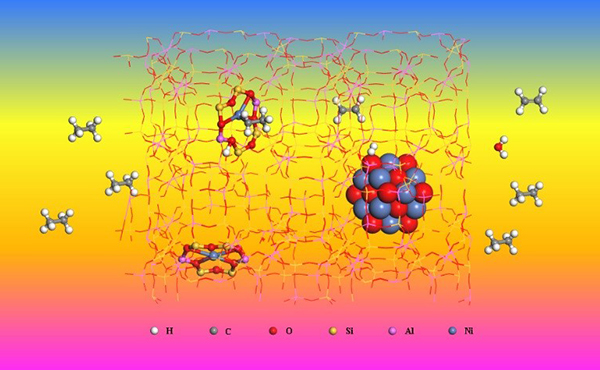Researchers Propose Strategy to Inhibit Over-oxidation for Oxidative Dehydrogenation of Ethane
Prohibiting deep oxidation remains a challenging task in oxidative dehydrogenation of light alkane since the targeted alkene is more reactive than parent substrate.
Recently, Dr. TIAN Ming and Prof. WANG Xiaodong's group from the Dalian Institute of Chemical Physics (DICP) of the Chinese Academy of Sciences (CAS) propsosed a strategy to inhibit deep oxidation by tailoring dual active sites to isolate dehydrogenation and oxidation instead of homogeneously active sites responsible for these two steps leading to consecutive oxidation of alkene.
This study was published in Nature Communications on Sept. 14.

Near 100% ethene selectivity achieved by tailoring dual active sites to isolate dehydrogenation and oxidation (Image by WANG Chaojie)
The researchers tailored dual active sites of Ni2+ Lewis acid sites (LAS) and NiO nanoclusters confined in HY framework wherein catalytic dehydrogenation of ethane occurs on Ni2+ LAS, resulting in the formation of ethene and hydrogen.
NiO nanoclusters with decreased oxygen reactivity were responsible for selective oxidation of hydrogen rather than over-oxidizing ethene. This achieves near 100% ethene selectivity at around 18% ethane conversion.
This study opens a new avenue for selectively oxidative dehydrogenation of light alkanes and could be extended to multiple oxidation reactions that tendentiously suffer from the plaguing of overoxidation.
The above work was supported by National Natural Science Foundation of China and National Key R&D Program of China. (Text by WANG Chaojie)